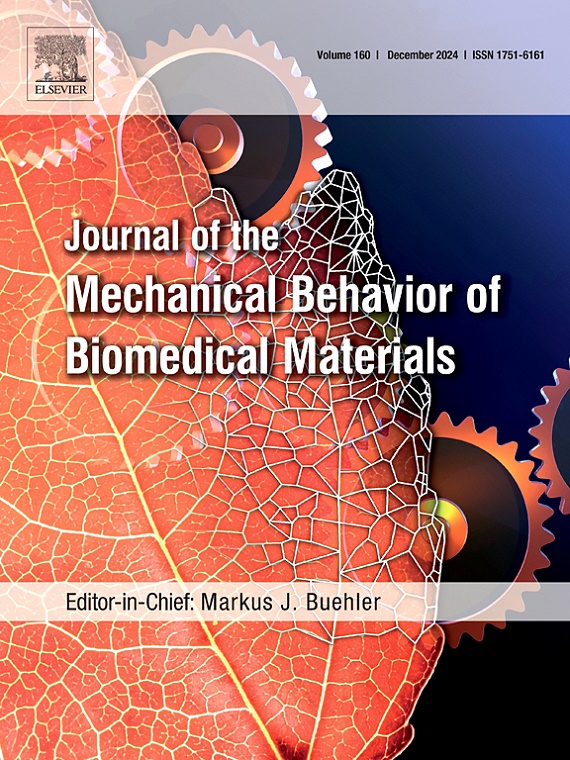Enhancing the tip positioning of a steerable catheter through quasilinear viscoelastic beam model
IF 3.5
2区 医学
Q2 ENGINEERING, BIOMEDICAL
Journal of the Mechanical Behavior of Biomedical Materials
Pub Date : 2025-06-06
DOI:10.1016/j.jmbbm.2025.107068
引用次数: 0
Abstract
This study introduces a quasilinear viscoelastic (QLV) beam model designed to enhance the tip positioning accuracy of steerable catheters used in minimally invasive surgeries. The catheter is modeled as a QLV beam with multiple segments of varying stiffness to accurately capture its bending behavior. Kinematic equations are presented to calculate the tip position based on the curvature of each segment. Stress relaxation tests are performed to identify the material parameters of the QLV model, and its accuracy is validated through performance tests under random deformations. Comparative performance analysis with elastic and linear viscoelastic models demonstrates that the QLV model achieves superior accuracy. The mean tip position error of the QLV model shows improvements of 80.6% and 30.9% compared to the elastic model and the linear viscoelastic model, respectively. These findings underscore the critical importance of incorporating time-dependent and nonlinear behaviors in accurately modeling the bending of steerable catheters.

利用拟线性粘弹性梁模型增强可操纵导管的尖端定位
本文介绍了一种拟线性粘弹性(QLV)束模型,旨在提高微创手术中可操纵导尿管的尖端定位精度。该导管被建模为具有不同刚度的多个节段的QLV光束,以准确捕获其弯曲行为。给出了基于每个线段曲率计算尖端位置的运动学方程。通过应力松弛试验确定了QLV模型的材料参数,并通过随机变形下的性能试验验证了模型的准确性。与弹性和线性粘弹性模型的性能对比分析表明,QLV模型具有较好的精度。QLV模型的平均尖端位置误差比弹性模型和线性粘弹性模型分别提高了80.6%和30.9%。这些发现强调了将时间依赖和非线性行为纳入可操纵导管弯曲精确建模的重要性。
本文章由计算机程序翻译,如有差异,请以英文原文为准。
求助全文
约1分钟内获得全文
求助全文
来源期刊

Journal of the Mechanical Behavior of Biomedical Materials
工程技术-材料科学:生物材料
CiteScore
7.20
自引率
7.70%
发文量
505
审稿时长
46 days
期刊介绍:
The Journal of the Mechanical Behavior of Biomedical Materials is concerned with the mechanical deformation, damage and failure under applied forces, of biological material (at the tissue, cellular and molecular levels) and of biomaterials, i.e. those materials which are designed to mimic or replace biological materials.
The primary focus of the journal is the synthesis of materials science, biology, and medical and dental science. Reports of fundamental scientific investigations are welcome, as are articles concerned with the practical application of materials in medical devices. Both experimental and theoretical work is of interest; theoretical papers will normally include comparison of predictions with experimental data, though we recognize that this may not always be appropriate. The journal also publishes technical notes concerned with emerging experimental or theoretical techniques, letters to the editor and, by invitation, review articles and papers describing existing techniques for the benefit of an interdisciplinary readership.
 求助内容:
求助内容: 应助结果提醒方式:
应助结果提醒方式:


